In today’s fast-paced world, customer support is more important than ever. Imagine this: you buy a new gadget, and it doesn’t work as expected. Frustrating, right? This is where great customer support comes in.
The requisites app design and effective customer service in mobile apps are the major factors that determine your success. There is no denying that top apps like Duolingo, Airbnb, and Habitica provide first-class support.
Do you know that effective customer service in mobile applications is a part of user engagement strategies for apps? According to a study by Pendo, 90% of users are more likely to continue using an app that provides helpful in-app support. This statistic underscores the importance of prioritizing customer support and engagement as part of user engagement strategies for apps.
But how do you provide that top-notch support? What strategies can you use to ensure your customers leave happy? Let’s dive into some user engagement strategies for apps that will elevate your customer service.
The Importance of Customer Support in Mobile Apps
As a businessman, you know why it is vital to invest in brand design to stand out from the crowd. Once you got the branding done, you need strategies to engage your customers. Customer support serves as a key element of the user engagement strategies for apps. Have you ever been stuck on an app glitch and been lost in a maze of FAQs? If you can’t get help quickly, your excitement can turn into frustration in no time! That’s why having solid customer support is crucial. It’s not just about having a cool product; it’s also about how smoothly users can navigate their issues.
Good customer support can transform a frustrated user into a loyal fan. Quick replies and friendly vibes are key to effective customer service in mobile applications. So, while your app’s features and design are important, remember that the way you treat your customers can be just as impactful. After all, happy users are the best promoters of your brand!
Strategies for Providing Excellent In-App Support
1. Offer Multiple Support Channels
When it comes to user engagement strategies for apps, variety is key. Think of it as a buffet of options—live chat, email, phone, carrier pigeon (just kidding on the last one!). Offering multiple support channels ensures effective customer service in mobile applications as users can reach out in a way that suits them best.
2. Utilize AI-Powered Chatbots
Meet your app’s new best friend: AI-powered chatbots. These smart bots can chat with users 24/7, answering questions, offering personalized recommendations, and even guiding them through your app. It’s like having a helpful buddy available anytime! You can save time and resources by using AI chatbots to handle a chunk of your customer’s queries. So, why not let a chatbot do some of the heavy lifting?
3. Provide Self-Service Resources
Empowering users with self-service resources is like giving them a toolkit to conquer tech challenges independently. FAQs, tutorials, how-to guides, and knowledge bases act as virtual guides, offering instant solutions and troubleshooting tips at the user’s fingertips. These resources will act as key factors in user engagement strategies for apps For example, if someone’s stuck on a feature, they can quickly check a tutorial instead of waiting for help. It’s a support strategy that lightens the load and keeps everyone happy.
4. Respond Promptly to User Inquiries
A timely response builds trust, enhances user satisfaction, and keeps users coming back for more. Zendesk found that 90% of customers expect a response within 10 minutes. A prompt response can be the difference between a satisfied user and a frustrated one. Imagine a user who is trying to figure out how to use a new feature on your app. If they shoot off a question and get a quick response, they feel valued and are more likely to stick around.
5. Personalize the Support Experience
Who doesn’t love a personal touch, right? Personalization is a priority in effective customer service in mobile applications. You can personalize by addressing users by name, offering customized solutions, or recommending relevant resources based on their preferences. Personalizing the support experience is one of the important user engagement strategies for apps. Personalizing the support experience will strengthen the connection between users and your app.
Techniques for Engaging Users Within Your App
1. Create Compelling Content and Features
In the world of mobile apps, content is king, and features are the crown jewels. Creating compelling content and features is a powerful technique for engaging users within your app. Imagine your app as a captivating story—each update, each feature, a new chapter that keeps users hooked. By creating compelling content and innovative features, you are not just offering functionality; you are crafting an experience that users can’t resist.
For instance, a fitness app could offer daily workout challenges, progress trackers, and personalized meal plans to keep users motivated and invested. Similarly, a news app could provide interactive articles, live updates, and personalized news feeds tailored to users’ interests, ensuring they stay informed and engaged.
This keeps them coming back for more because they feel connected and excited about what’s next. Plus, when users find value and enjoyment in your app, they are more likely to stick around and even become loyal fans.
2. Gamify the User Experience
Who says using an app can’t be fun and games? Gamifying is a great tool for effective customer service in mobile applications as it turns interactions into exciting challenges. It is a clever strategy for providing excellent in-app support. Think of it like leveling up in a video game—users earn points, unlock achievements, and compete with friends, all while engaging with your app.
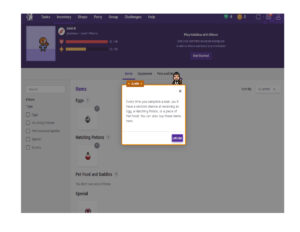
Take Habitica, for example, a habit-building app that turns daily tasks into a rewarding game. Users earn points for completing tasks and leveling up their avatars. It keeps the users entertained as well as motivated to stay engaged with the app. This gamified approach makes users feel like they are on a quest for self-improvement, turning mundane activities into exciting challenges. Most habit-building and fitness applications use gamification as their top user engagement strategies for apps.
Gamification will keep users entertained, and foster a sense of investment and commitment. This makes them more likely to rely on the app for support and assistance.
3. Leverage Push Notifications Strategically
Push notifications are a game-changer in user engagement strategies for apps. Think of them as little nudges that remind users about your app and what it has to offer. But here’s the catch: you have to use them wisely! Instead of bombarding users with messages every day, focus on sending timely and relevant notifications. Localytics found that 65% of users find push notifications useful when they are personalized and relevant.
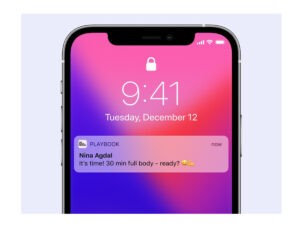
For example, if you have a fitness app, you might send a reminder about a workout they planned to do or a motivational quote to inspire them. You can also personalize notifications based on user behavior—like letting them know when they’ve hit a milestone or if there’s a new feature that aligns with their interests. This way, users feel like you’re speaking directly to them, rather than just blasting out generic messages.
4. Foster a Sense of Community
Now, let’s talk about building community. People love feeling connected, and creating a space where users can interact with one another can really boost engagement. Consider adding features like forums, chat rooms, or social sharing options where users can share their experiences, tips, or even challenges.
You could also host events or challenges within the app that encourage users to collaborate or compete with each other. For instance, if you have a cooking app, you could launch a weekly recipe challenge where users post their creations and vote for their favorites. This not only keeps them coming back for more but also makes them feel like they’re part of something bigger.
Incorporating user-generated content is another great way to foster community. Highlighting user stories or testimonials can make others feel more connected and encouraged to participate. Plus, it gives users a sense of ownership over the app.
5. Continuously Gather and Respond to User Feedback
One of the best ways to engage your users is by continuously gathering and responding to their feedback. Effective customer service in mobile applications is all about making sure users feel heard and supported, even when things go a bit sideways. Think of it like a conversation—if you want to keep chatting, you need to listen! Start by making it super easy for users to share their thoughts. Quick surveys or simple rating prompts after they use the app, can work wonders. This way, you get real-time insights on what’s hitting the mark and what’s not.
But here’s the kicker: once you gather that feedback, don’t just let it gather dust! Show your users you care by actually responding to their suggestions. If someone asks for a cool new feature, let them know you’re on it!
Airbnb thrives on feedback—they ask users for reviews after every stay, and boy, do they listen! Whether it’s improving search filters or adding new features, they tweak their app based on what users want.
You can even highlight changes made based on user input in your updates. This makes users feel valued and part of the app’s journey. So, keep that feedback loop going—ask, listen, and act! It’ll not only boost engagement but also create a loyal community around your app. Happy users mean a thriving app!
Real-World Examples of Successful Customer Support and Engagement
1. Slack: Prioritizing In-App Support and User Engagement
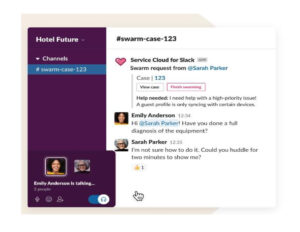
Slack, the workplace messaging champ, knows the drill when it comes to prioritizing in-app support and user engagement. They have nailed it by embedding support right into the app, making help just a click away. From their quick troubleshooting guides to in-app chat support, they have got your back like that trusty colleague who always has an answer.
Their strategy? It’s all about being proactive and available. Slack anticipates user needs with helpful tips and guides, ensuring a seamless user experience. And when users do need help, they offer instant assistance without ever leaving the app, keeping the conversation flowing.
The outcome? Users feel supported every step of the way, boosting engagement and loyalty. Employees aren’t just using Slack; they’re part of a community where help is always within reach. Start with prioritizing in-app support by making it accessible, proactive, and seamless. This is one of the best user engagement strategies for apps.
Engage users by fostering a sense of community where support is a shared experience. Remember, it’s not just about fixing issues; it’s about creating a space where users feel valued, connected, and part of something bigger than just an app. Slack’s approach is a masterclass in turning support into a community-building tool that keeps users coming back for more.
2. Duolingo: Making Language Learning Fun and Engaging
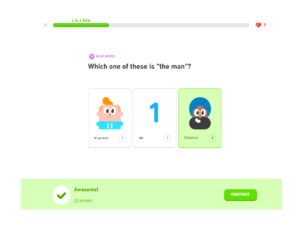
Duolingo has totally transformed language learning into a fun and engaging experience! One of their coolest strategies is gamification. Their bite-sized lessons, streaks, and rewards system keep you hooked, making every achievement feel like a mini-celebration. You earn points, level up, and even compete with friends, which makes learning feel less like a chore and more like a game.
Another smart move is their use of streaks. If you practice every day, you maintain a streak, which can become a badge of honor. This little nudge encourages users to show up daily, making it one of the great user engagement strategies for apps.
Lastly, the community aspect is pretty cool too. Users can connect with others, share tips, and even participate in forums. This creates a supportive environment where learners can celebrate each other’s wins and share their struggles.
3. Airbnb: Providing Personalized Support for Diverse Users
Airbnb, the rental platform buddy that knows how to roll out the red carpet for all its users! When it comes to personalized support for diverse travelers, Airbnb rules. Their strategy? Tailoring the experience to suit the unique needs of every guest and host.
They have support teams that speak multiple languages and understand cultural nuances, so whether you’re in Tokyo or Toronto, you can get help that feels tailored to your needs.
Another cool feature is their user-friendly app interface. Airbnb has designed the app to be super intuitive, making it easy for anyone to navigate, regardless of their tech-savviness. Plus, they offer various accessibility options for users with disabilities, ensuring that everyone can find a place to stay without any hassle.
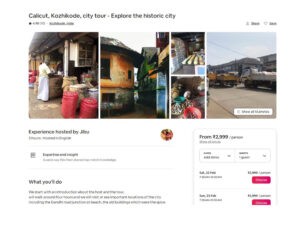
The platform has also introduced features like “Experiences,” which allow users to book local activities that match their interests. This adds a personal touch, letting travelers dive deeper into the culture of their destination.
Lastly, Airbnb’s commitment to safety and trust is evident through their 24/7 customer support and extensive verification processes for both hosts and guests. The result? Users feel seen, heard, and cared for throughout their journey. Airbnb’s attention to detail, cultural sensitivity, and dedication to user satisfaction set a benchmark for personalized support in the travel industry.
Challenges in Delivering Effective Customer Service in Mobile Applications
While providing effective customer service in mobile applications is essential for your business’s success, it also comes with challenges:
- Balancing Automation and Human Interaction: Finding the right mix of AI and human support is crucial for maintaining efficiency without losing personalized touch.
- Keeping Up with User Expectations: Meeting user demands for instant and personalized support requires resources and strategy to maintain user satisfaction.
- Analyzing Customer Data: Processing vast amounts of data to derive actionable insights can be challenging, impacting support improvements.
- Adapting to New Communication Channels: Staying updated with evolving communication platforms ensures effective user engagement across diverse channels.
- Measuring Impact: Determining the effectiveness of support efforts on user loyalty and retention requires aligning metrics with your business goals.
Conclusion: The Key to Long-Term App Success
At the end of the day, it’s all about having effective customer service in mobile applications that keep users happy. Most successful online businesses have effective customer service in mobile applications. When it comes to nailing long-term app success, the secret lies in the blend of excellent in-app support, engaging user techniques, and overcoming customer support challenges. Picture this: seamless support experiences, captivating user engagement, and conquering every hurdle that comes your way. That’s the winning formula for app triumph!
Now, imagine weaving all these elements together effortlessly into your app journey. That’s where GyanDevign Tech Services steps in. With our expertise in creating apps that users adore, navigating challenges with finesse, and keeping engagement levels sky-high, they are your ultimate partners in-app domination.

